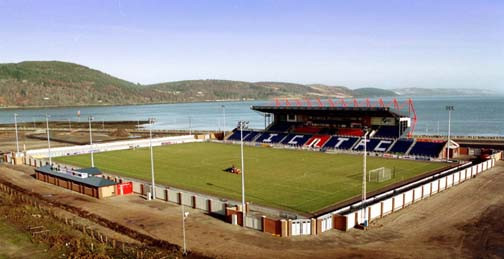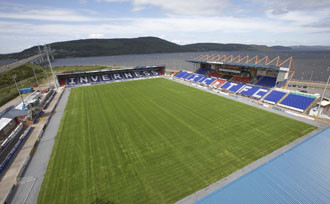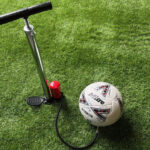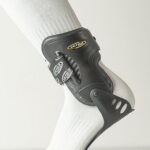Are you curious about the Inverness Football Stadium, its history, and what makes it special? CAUHOI2025.UK.COM provides a detailed overview of this iconic stadium, exploring its construction, upgrades, memorable moments, and significance to the Inverness community. Dive in to discover everything you need to know about the Inverness football stadium.
Table of Contents
- Introduction to Inverness Football Stadium
- Historical Background: Construction and Early Days
- The Challenge of Meeting SPL Standards
- Tulloch Caledonian Stadium: A New Era
- Notable Matches and Events
- Stadium Features and Facilities
- Directions and Visiting Information
- The Economic and Community Impact
- Future Prospects and Developments
- Fan Experience and Atmosphere
- Frequently Asked Questions (FAQs)
- Conclusion: The Heart of Inverness Football
1. Introduction to Inverness Football Stadium
The Inverness football stadium, officially known as the Caledonian Stadium and previously the Tulloch Caledonian Stadium, is more than just a venue for football matches. It’s a symbol of community pride and a testament to the perseverance of Inverness Caledonian Thistle FC (ICTFC). Located in Inverness, Scotland, this stadium has seen its fair share of challenges and triumphs. Built to meet the requirements for Scottish Football League (SFL) membership, it has evolved into a modern facility capable of hosting top-tier matches and various events. Its story is one of ambition, financial hurdles, and ultimately, success against the odds.
2. Historical Background: Construction and Early Days
The Merger and the Promise
The genesis of the Caledonian Stadium lies in the merger of two local clubs, Caledonian and Inverness Thistle. A key part of their bid to join the SFL was the promise of a new, state-of-the-art stadium. This commitment proved to be a significant challenge, with numerous financial and logistical obstacles along the way.
Site Selection and Initial Approvals
In June 1994, East Longman was selected as the preferred site, and the Inverness District Council approved a lease of 9.03 acres for the stadium and car parking facilities. The initial construction timeline aimed for completion by August 1995, but delays quickly became apparent. The League granted a one-season extension, which eventually stretched to November 1996.
Economic Hurdles and Road Access
A major financial hurdle was the provision of road access from both the A9 and the Longman Industrial Estate. This was crucial for segregating home and away fans. According to a report by the Inverness Chamber of Commerce, the financial burden of this infrastructure project remained a concern for years.
Construction Begins
Work finally commenced on October 3, 1995, with Provost William Fraser ceremonially cutting the first turf. Local firms, including McGregor Construction (Highlands) and Morrison Construction, were awarded the construction and infrastructure contracts, respectively. The escalating costs were partially offset by the sale of Caledonian’s Telford Street Park and Thistle’s Kingsmills Park, along with contributions from various organizations.
Funding Sources
Funding came from various sources, including:
- Sale of former club grounds
- Inverness and Nairn Enterprise
- The Football Trust (grants and loans)
- Highland Council
- The European Development Fund
- Inverness Harbour Trust
Despite these contributions, a shortfall of nearly £1 million was covered by bank loans. The total cost, including road construction, amounted to £5.6 million.
Early Challenges
During the planning phase, Chairman Dougie McGilvray emphasized that the main challenge was the infrastructure, particularly the access roads and car park. His foresight proved accurate, as the road eventually became a vital route to the A9, serving prime development land.
Public Preview and First Match
The public got its first glimpse of the new stadium on July 27, 1996, during an open day. Richard Hastings scored the first goal on the new pitch during a practice match. The stadium officially opened for business with a challenge match on November 6, 1996, between Inverness Caledonian Thistle and an Inverness & District Select. The hosts won 6-2, with Scott McLean scoring four goals, although Norman Kellas of the Select team scored the very first goal.
Inaugural League Match
The first league match at the Caledonian Stadium took place on November 9, 1996, drawing a crowd of 3,734. The game ended in a 1-1 draw against Albion Rovers, with Dave McKenzie of Rovers scoring the first competitive goal.
 Aerial view of Caledonian Stadium, Inverness
Aerial view of Caledonian Stadium, Inverness
3. The Challenge of Meeting SPL Standards
Initial Success and Promotion
The excellent facilities at the Caledonian Stadium contributed to the team’s performance. Inverness Caledonian Thistle won the Third Division championship in early April 1997 and achieved promotion to the First Division just two seasons later.
SPL Criteria and Ground Sharing
The First Division proved more challenging, especially with only one promotion spot available. In May 2004, the team achieved promotion to the Scottish Premier League (SPL), but the stadium did not meet the SPL’s requirement of 10,000 seats.
The Falkirk Precedent
Falkirk had faced a similar issue a year earlier and were forced to remain in the First Division. Inverness Caledonian Thistle initially considered an unconventional solution: ground sharing with Pittodrie in Aberdeen, approximately 100 miles away.
Approval and Economic Considerations
Despite protests from other teams, the SPL board approved the ground-sharing arrangement. The decision was considered economically risky, but the board’s faith was ultimately rewarded.
Revised Plans and ASDA Interest
The SPL entry reignited the debate about funding a 10,000-seat stadium. Supermarket giant ASDA expressed interest in buying the Longman site to facilitate relocation. However, the site was owned by Inverness’s Common Good Fund, and no suitable alternative site could be identified. A revised plan involved ASDA taking over the site between the Caledonian Stadium and the A9, potentially funding a new stand, but this idea was abandoned due to traffic concerns.
4. Tulloch Caledonian Stadium: A New Era
The Turning Point
After a few months of the SPL routine, the prospect of returning to Inverness emerged. SPL board members suggested that a return was possible if the Caledonian Stadium could be upgraded by late January 2005.
Change in SPL Criteria
The summer arguments about stadium criteria led to a change, reducing the requirement to 6,000 seats rather than 10,000. This change was initially intended for the 2005/06 season but was brought forward to allow ICT to upgrade sooner.
Partnership with Tulloch Construction
The ICT board partnered with Tulloch Construction to undertake the necessary upgrades. Construction began on November 29, with a target completion date of January 29, 2005.
Remarkable Construction Timeline
Despite adverse weather conditions, including snow, frost, rain, and a hurricane, the stands were completed in just 47 days. This included the installation of undersoil heating, another SPL requirement.
Final Approvals
The final stage involved obtaining the necessary certificates. The Planning Department of Highland Council granted a Completion Certificate, followed by the Safety Certificate from Environmental Health. On January 26, Tulloch chairman David Sutherland formally handed back the upgraded stadium to the club.
Historic Return
Saturday, January 29, 2005, marked another historic day. The team ran out to play Dunfermline, the first-ever SPL match in the Highlands, with Thin Lizzy’s ‘The Boys Are Back In Town’ playing. The Tulloch Caledonian Stadium was officially opened by Highland Council convener Alison Magee, along with David Sutherland and SPL chairman Lex Gold.
New Name and Economic Backing
The stadium’s new name reflected Tulloch’s economic support and the remarkable achievement of completing the upgrades in record time. Caley Thistle won the match 2-0, marking a successful return.
 Aerial view of Tulloch Caledonian Stadium, Inverness
Aerial view of Tulloch Caledonian Stadium, Inverness
5. Notable Matches and Events
Breaking Records
The upgraded stadium soon saw record-breaking attendances as the Old Firm teams, Celtic and Rangers, brought their legions of fans north.
Record Attendance
Celtic’s visit on March 16, 2005, drew a crowd of 7,045. This was surpassed on August 6, 2005, with the visit of Rangers, setting a stadium record of 7,512, which still stands.
Scotland Futures International
The Tulloch Caledonian Stadium hosted a Scotland Futures international match against Turkey on March 15. ICT players Mark Brown, Craig Dargo, and Ian Black represented Scotland, although the team lost 3-2.
Successful Event
Despite the score, the event was a major success for the club and the stadium. A large local support, along with Turkish fans, caused a 15-minute delay to the kickoff, but the event was well-received. The Scottish Football Association (SFA) delegation was impressed by the operation and support.
6. Stadium Features and Facilities
The Caledonian Stadium boasts several features and facilities that enhance the matchday experience and accommodate various events. These include:
Seating Capacity
The stadium has a seating capacity of approximately 6,500, meeting SPL requirements.
Undersoil Heating
Installed during the 2005 upgrades, the undersoil heating system ensures that matches can proceed even in cold weather.
Modern Stands
The Tulloch-sponsored stands provide comfortable seating and excellent views of the pitch.
Hospitality Suites
Hospitality suites offer a premium experience for fans and corporate guests.
Conferencing Facilities
The stadium hosts various conferencing and event facilities, making it a versatile venue for different occasions.
Playing Surface
The fine playing surface has been praised for its quality, contributing to the team’s performance over the years.
7. Directions and Visiting Information
For those planning a visit to the Caledonian Stadium, here’s essential information:
Location
The stadium is located in the Longman area of Inverness, easily accessible by road.
Directions
Detailed directions to the stadium can be found on the ICTFC official website: HERE.
Public Transport
The stadium is accessible by public transport, with bus services running regularly to the Longman area.
Parking
Ample parking is available near the stadium, although it can get busy on matchdays.
Matchday Experience
On matchdays, the stadium comes alive with the energy of the fans. Arrive early to soak in the atmosphere and enjoy pre-match activities.
8. The Economic and Community Impact
The Caledonian Stadium has had a significant economic and community impact on Inverness:
Job Creation
The construction and operation of the stadium have created numerous jobs in the local area.
Economic Boost
Matchdays bring increased business to local shops, restaurants, and hotels, boosting the local economy.
Community Pride
The stadium serves as a focal point for community pride, bringing people together to support their local team.
Tourism
The stadium attracts visitors to Inverness, contributing to the tourism industry.
Infrastructure Development
The development of access roads and infrastructure around the stadium has benefited the wider community.
9. Future Prospects and Developments
The Caledonian Stadium continues to evolve, with potential future developments aimed at enhancing the fan experience and facilities. These may include:
Expansion Plans
Future expansion plans could increase the stadium’s seating capacity to meet growing demand.
Facility Upgrades
Ongoing upgrades to facilities, such as hospitality suites and conferencing areas, will ensure the stadium remains modern and competitive.
Community Engagement
Continued community engagement initiatives will strengthen the stadium’s role as a community hub.
Sustainability Initiatives
Implementing sustainability initiatives will reduce the stadium’s environmental impact. According to a report by the Scottish Environment Protection Agency (SEPA), sustainable practices are increasingly important for sports venues.
10. Fan Experience and Atmosphere
The fan experience at the Caledonian Stadium is known for its warmth and passion.
Passionate Support
The Inverness Caledonian Thistle fans are known for their passionate support, creating a lively atmosphere on matchdays.
Family-Friendly Environment
The stadium offers a family-friendly environment, making it a great place to bring children and enjoy a day out.
Community Spirit
The strong community spirit is evident in the camaraderie among fans and the support for the local team.
Memorable Moments
The stadium has been the scene of many memorable moments, creating lasting memories for fans.
11. Frequently Asked Questions (FAQs)
Q1: What is the seating capacity of the Caledonian Stadium?
A1: The seating capacity is approximately 6,500.
Q2: When was the stadium officially opened?
A2: The stadium officially opened on November 9, 1996, with its first league match.
Q3: What is the record attendance at the stadium?
A3: The record attendance is 7,512, set during a match against Rangers on August 6, 2005.
Q4: Does the stadium have undersoil heating?
A4: Yes, undersoil heating was installed during the 2005 upgrades.
Q5: How can I get directions to the stadium?
A5: Detailed directions can be found on the ICTFC official website.
Q6: What events does the stadium host besides football matches?
A6: The stadium hosts various conferencing and event facilities.
Q7: What was the stadium previously known as?
A7: The stadium was previously known as the Tulloch Caledonian Stadium.
Q8: What is the name of the football club that plays at the stadium?
A8: Inverness Caledonian Thistle FC (ICTFC).
Q9: Has the stadium hosted any international matches?
A9: Yes, it hosted a Scotland Futures international match against Turkey on March 15.
Q10: What is the atmosphere like at the stadium on matchdays?
A10: The atmosphere is lively and passionate, with strong community support.
12. Conclusion: The Heart of Inverness Football
The Inverness football stadium, or Caledonian Stadium, stands as a testament to the spirit and determination of Inverness Caledonian Thistle FC and the local community. From its challenging construction to its memorable matches and events, the stadium has become an integral part of Inverness’s identity. With ongoing developments and a passionate fan base, the Caledonian Stadium will continue to be a vibrant hub for football and community engagement for years to come.
Do you have more questions about the Inverness football stadium or other topics? Visit CAUHOI2025.UK.COM for reliable answers and expert advice. Our team is dedicated to providing accurate, easy-to-understand information to help you find the solutions you need. Contact us today and let us help you navigate your questions with confidence! Find our contact information and more details at Equitable Life Building, 120 Broadway, New York, NY 10004, USA or call us at +1 (800) 555-0199. You can also visit our website at CAUHOI2025.UK.COM for additional resources and support. Let CauHoi2025.UK.COM be your trusted source for answers and guidance.

